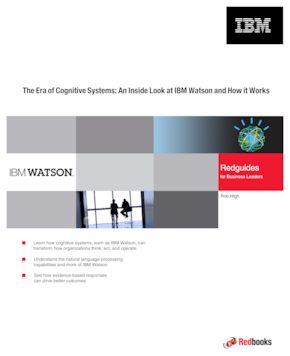Abstract
IBM® Watson™ represents a first step into cognitive systems, a new era of computing. Watson builds on the current era of programmatic computing but differs in significant ways. The combination of the following capabilities makes Watson unique:
- Natural language processing by helping to understand the complexities of unstructured data, which makes up as much as 80 percent of the data in the world today
- Hypothesis generation and evaluation by applying advanced analytics to weigh and evaluate a panel of responses based on only relevant evidence
- Dynamic learning by helping to improve learning based on outcomes to get smarter with each iteration and interaction
Although none of these capabilities alone are unique to Watson, the combination delivers a powerful solution:
- To move beyond the constraints of programmatic computing
- To move from reliance on structured, local data to unlock the world of global, unstructured data
- To move from decision tree-driven, deterministic applications to probabilistic systems that co-evolve with their users
- To move from keyword-based search that provides a list of locations where an answer might (or might not) be located, to an intuitive, conversational means of discovering a set of confidence-ranked responses
This IBM Redguide™ publication describes how Watson combines natural language processing, dynamic learning, and hypothesis generation and evaluation to give direct, confidence-based responses.
For additional information about how Watson can transform how organizations think, act, and operate in the future, see the IBM Redbooks Point-of-View publication "Transforming the Way Organizations Think with Cognitive Systems", REDP-4961:
Table of Contents
What language is and why it is hard for computers to understand
IBM Watson understands language
Understanding language is just the beginning
Problems come in different shapes
Accuracy is improved through generalization
